Service History
The schooner
America was enrolled on May 31, 1873 from the Port Huron, Michigan, shipyard of Archibald Muir & Co. on the Black River. Chicago was listed as its homeport. It was the product of Master carpenter James Perry; the
America had one deck, three masts, and was painted black. Built to the dimensions of the locks of the Welland Canal, the ship's bow bluff and square lines defined the boxy hull shape as a canaller. Canallers were a vessel type uniquely developed on the Great Lakes; they were designed to transit the Welland Canal locks while carrying the largest possible amount of cargo.
Captain William Bronley was named the first Master of
America, but by the time of its first trip, Captain James Cornell was at the helm. The ship's maiden voyage departed Port Huron on June 18, 1873, carrying lumber through the Welland Canal to Clayton, New York. Throughout the rest of the 1873 season, the
America made multiple trips carrying wheat cargo throughout the Great Lakes. Captain A.P. Christensen took command on April 22, 1874. On October 20 of that year, with 23,000 bushels of wheat onboard, the
America went ashore on the south side of Long Point in Lake Erie. The tug
Orient was dispatched to assist in the release. By the time of its arrival, four feet of water was in the
America's hold, and it took nearly two days of work to free the vessel. The damage to its hull was estimated at $5,000 and the loss of partial cargo cost the owners $31,000.
On May 21, 1875, a new enrollment was issued for a change in ownership. Only two accounts of the
America's travels have been identified for 1875, and no record of the
America's service history have been found in newsprint for the 1876 season. On June 23, 1877, the steamer
City of New York collided with the
America in a dense fog, seven miles west of Whitefish Point on Lake Superior. Later that season, on October 19, the
America struck the scow schooner
St. Joseph near Beach Island in Lake St. Clair. The damage to the scow was so severe that it was determined a total loss and abandoned. Several uneventful arrivals and passages through the Welland Canal were noted for the 1879 season.
Final Voyage
On the evening of September 28, 1880, the tugs
A.W. Lawrence and
M.A. Gagnon, with two loaded stone scows in tow, were enroute from Two Rivers, Wisconsin, to Ahnapee, Wisconsin. The scows belonged to George O. Spear of Sturgeon Bay and were carrying stone to build the government pier at Ahnapee. The
America was running light from Chicago to Escanaba, where it was to load iron ore bound for Michigan City. The ship was under the command of Captain Fred Gunderson.
The Captain of the
A.W. Lawrence saw the
America approaching and sounded two sharp whistles to keep the vessel away, but the warning was not heard by the
America’s crew. The
A.W. Lawrence altered its course to pass to leeward of the
America, but the altered course brought the scows directly into the
America’s path. Just before midnight, the
America struck the first scow of the tow with such force that a large hole was torn in its starboard bow. The vessel sank within minutes, located approximately nine miles north of Two Rivers Lighthouse and four miles offshore. The crew quickly launched the yawl and scrambled aboard, and while no lives were lost, Captain fred Gunderson supposedly lost a great sum of money, and the crew lost all personal effects. The
America’s crew arrived at Two Rivers Point the next morning; a telegram was sent to Thomas Hood, the vessel's owner, in Chicago.
A contract was made with Stephen B. Grummond of Detroit, owner of the tug
Winslow, to drag the
America to shallow water, send a diver down to patch the hole, and then raise the vessel and pump it dry. Grummond would receive $3,500 for a successful job, or nothing if he failed. The
Winslow left Detroit on 3 October, and along with the tug
Gagnon, arrived at the wreck of the
America on the morning of October 6. Attempts to recover the ship were unsuccessful, so Grummond telegraphed the Chicago insurance underwriters to inform them he had abandoned the
America in deep water. On behalf of the underwriters, Captain John Prindiville Jr. visited the
America on October 13 to find that the wreck had now completely settled to the bottom. In an excerpt from the
Door County Advocate, Captain Prindiville stated, "She is gone for good, there is no doubt of that. Any further effort to recover the vessel would be by outside parties."
At the time of its loss, the
America was valued at $12,000 and insured for $10,000. An accident investigation concluded the
A.W. Lawrence was at fault in the collision, and Captain Hood of the
America received $11,000 total in compensation. In June of 1882, one final attempt was made to raise the
America but was ultimately unsuccessful.
Today
The
America site lies in 120 feet of water, eight miles southeast of the Kewaunee River outlet on Lake Michigan. The spars were removed in 1881, as they were determined to be an obstacle to navigation. The deck has collapsed, and both the port and starboard sides have broken at the turn of the bilge and fallen to starboard. Despite its broken condition, nearly all of the vessel's hull structure and standing rigging is extant but scattered around the site.
One of the most unique features of the
America site is the removable bowsprit that was designed to be unstepped and raised while transiting the Welland Canal locks. This feature was unique to canallers, and the
America site is particularly significant for this feature and its bowsprit that has come unstepped and allowed otherwise hidden features to be readily visible. All three of
America's masts are extant and lie next to one another on the lakebed south of the vessel's starboard side. The jibboom has been lifted from the foredeck and thrust into the sand forward of the bow. The wheel was recovered and is located in the Manitowoc Maritime Museum, located in Manitowoc, Wisconsin. The anchor is at the Rogers Street Fishing Village in Two Rivers, Wisconsin.
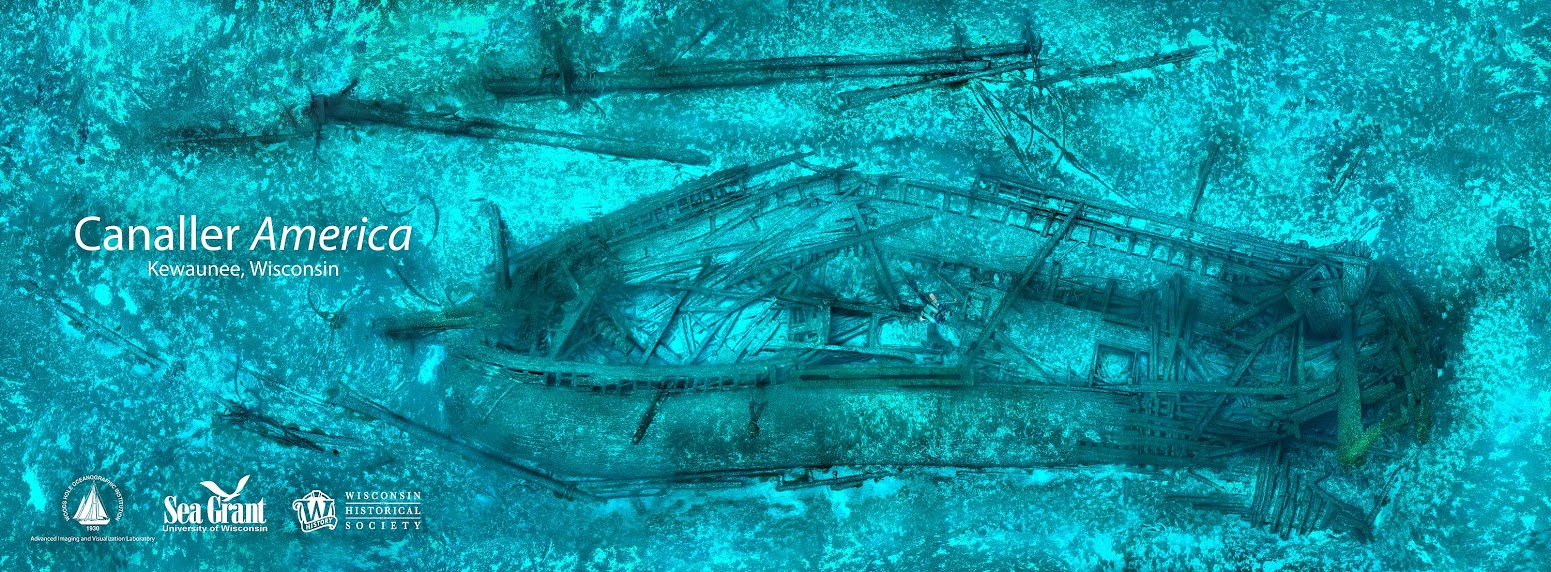
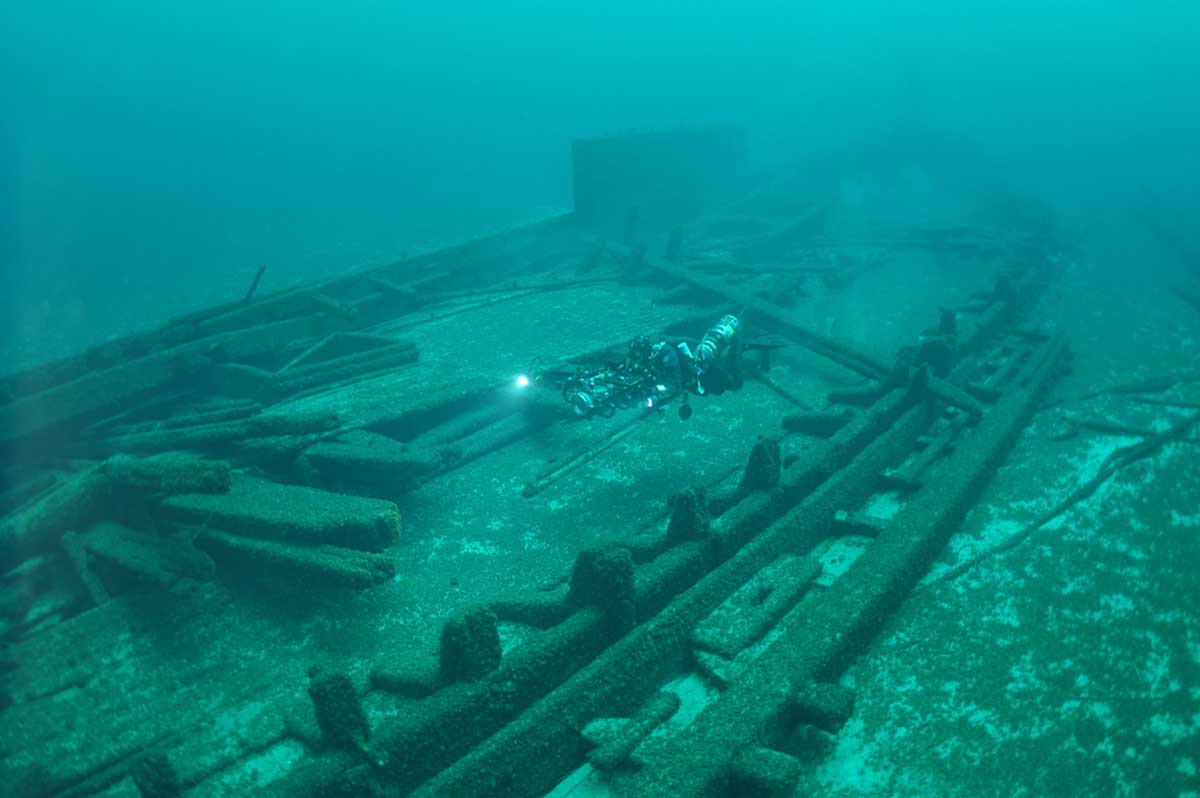
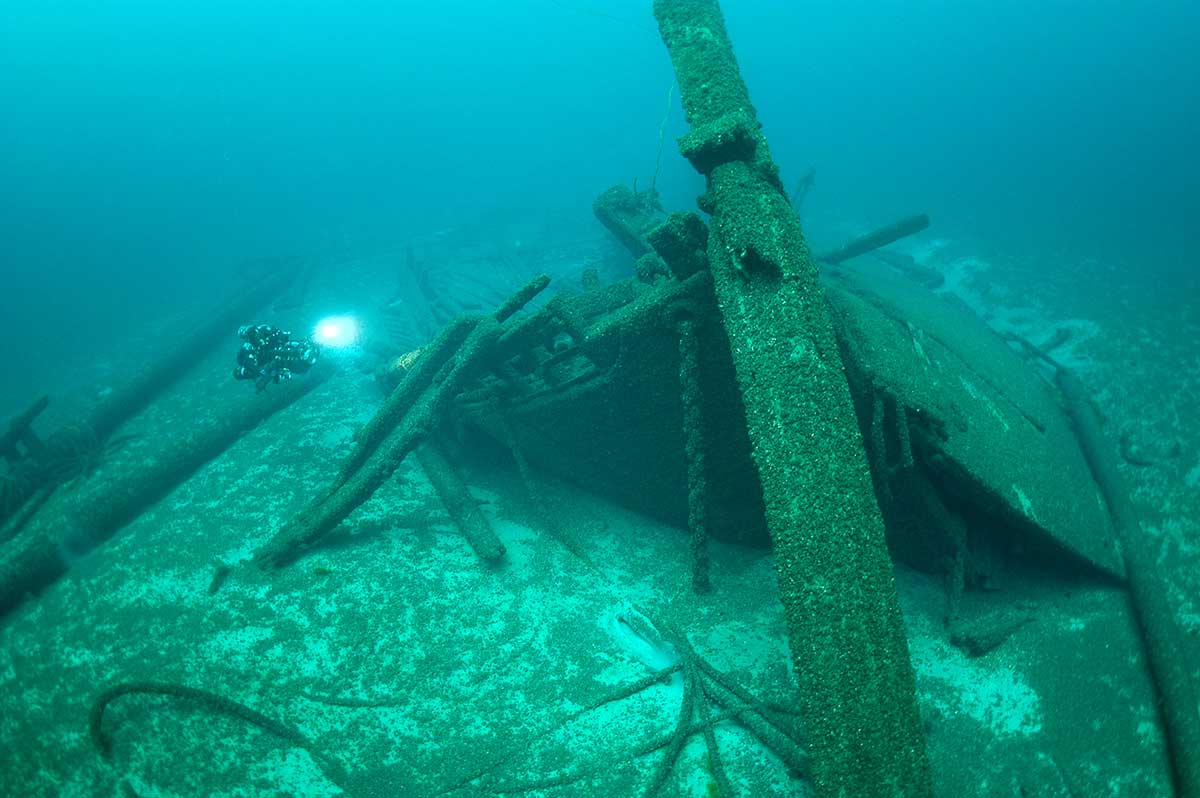
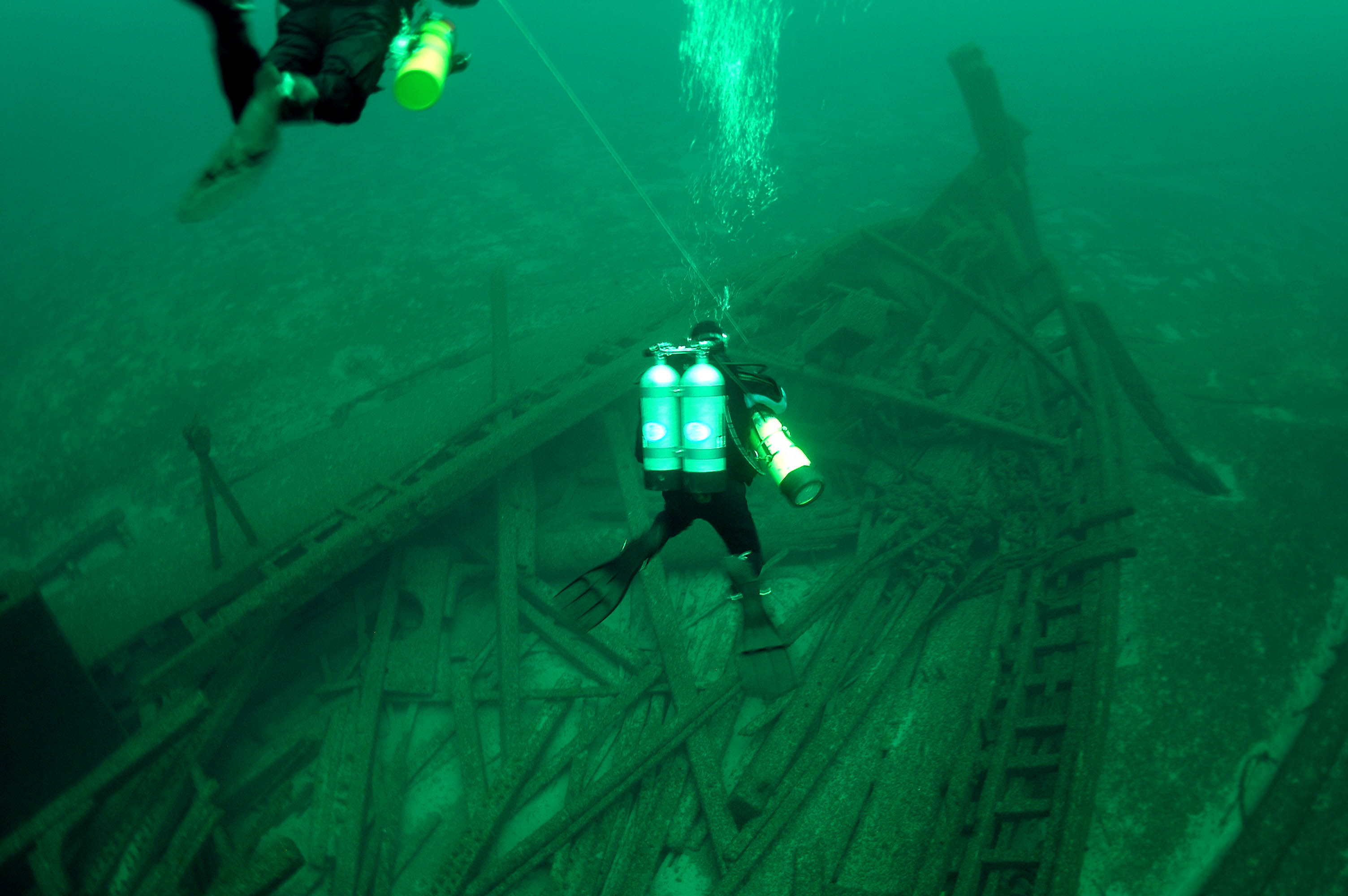
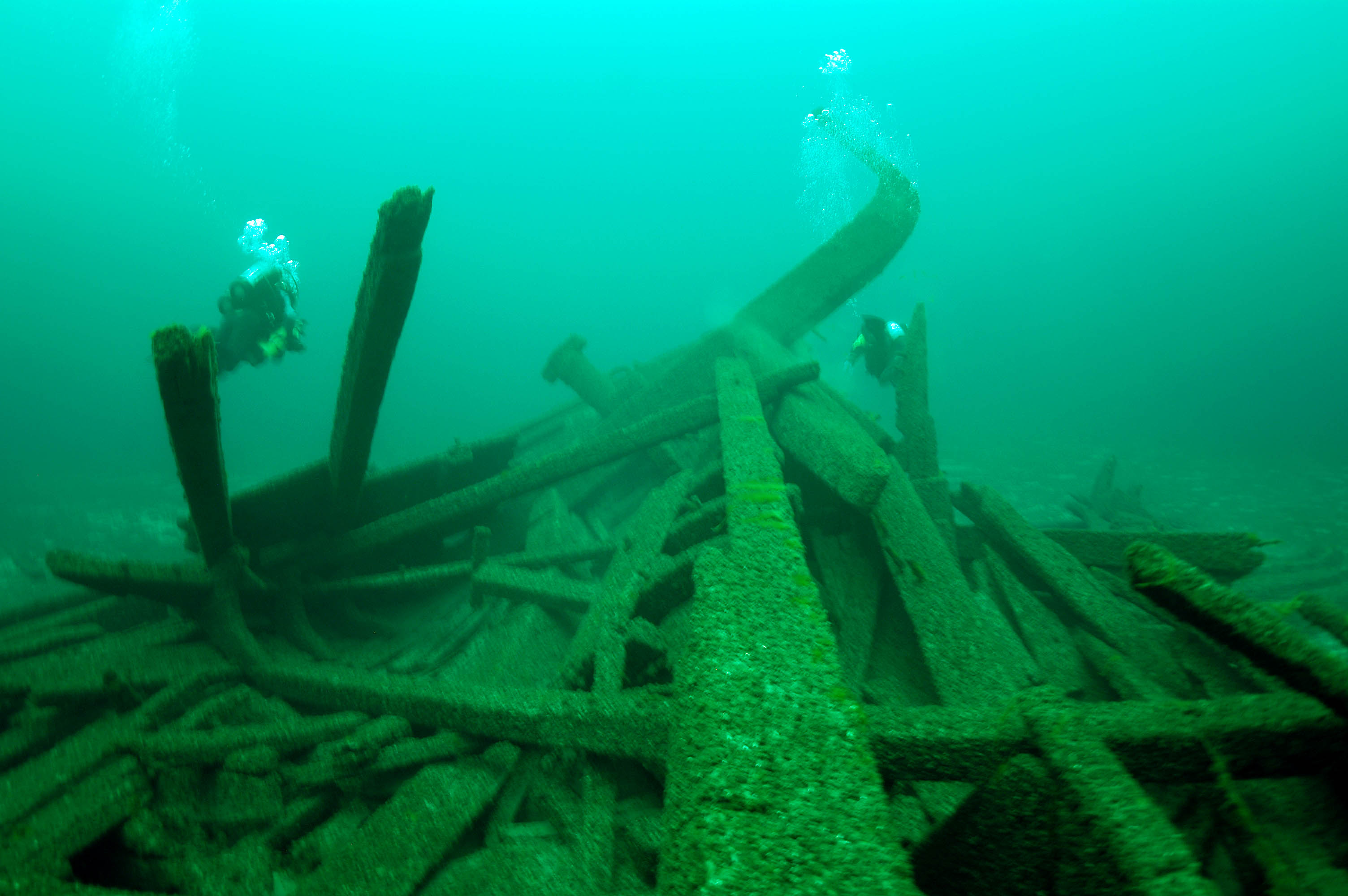
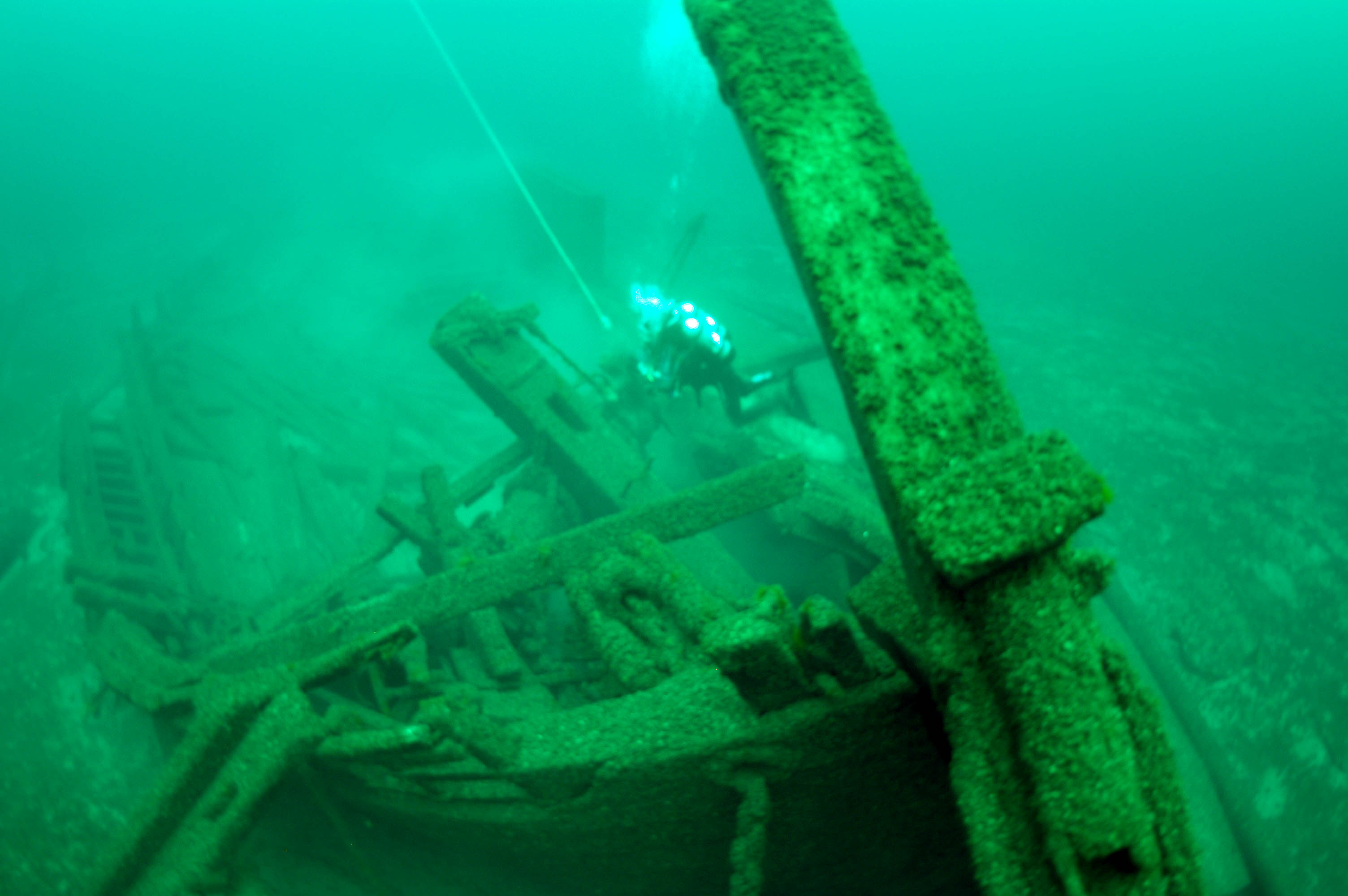
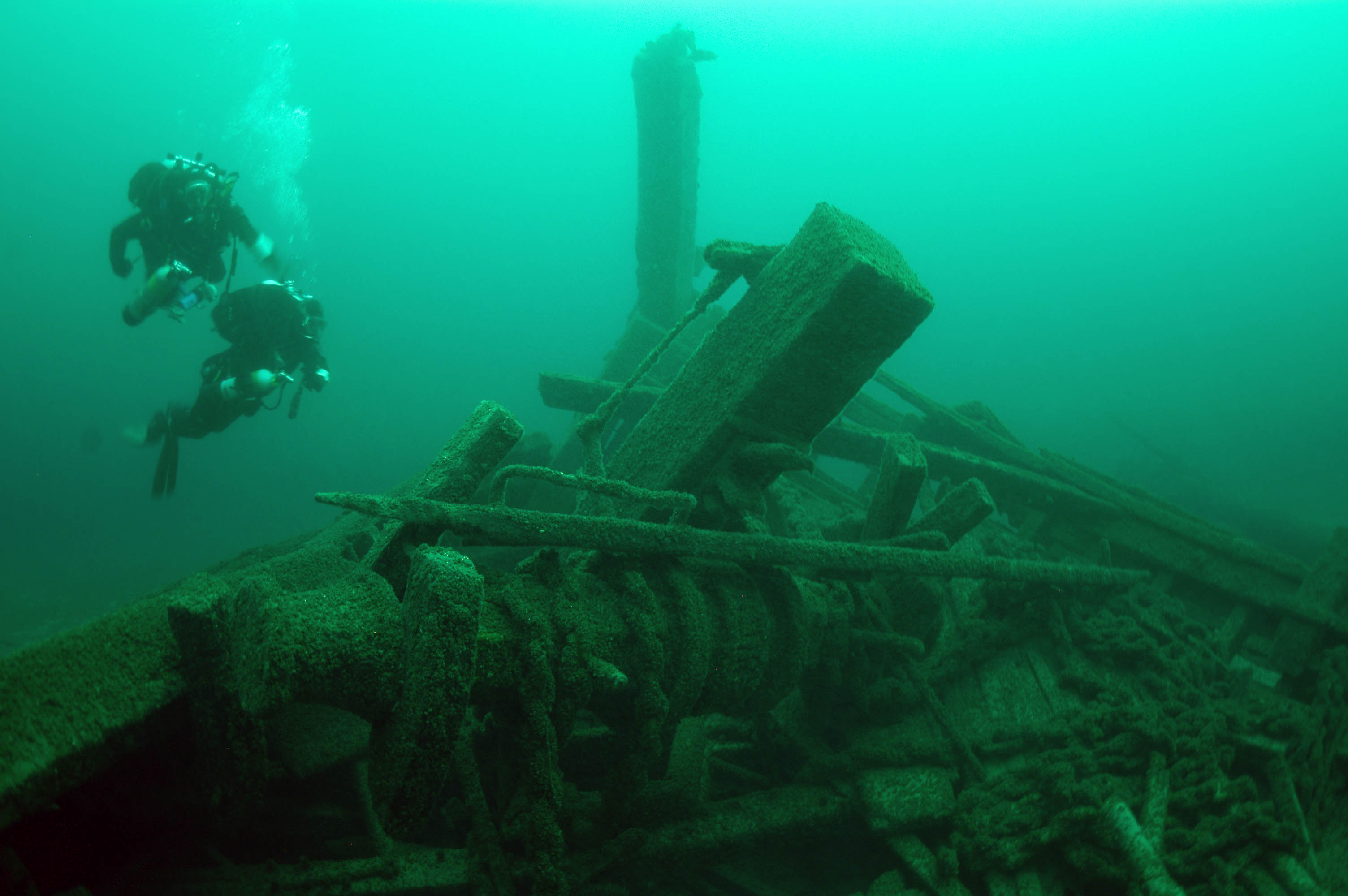
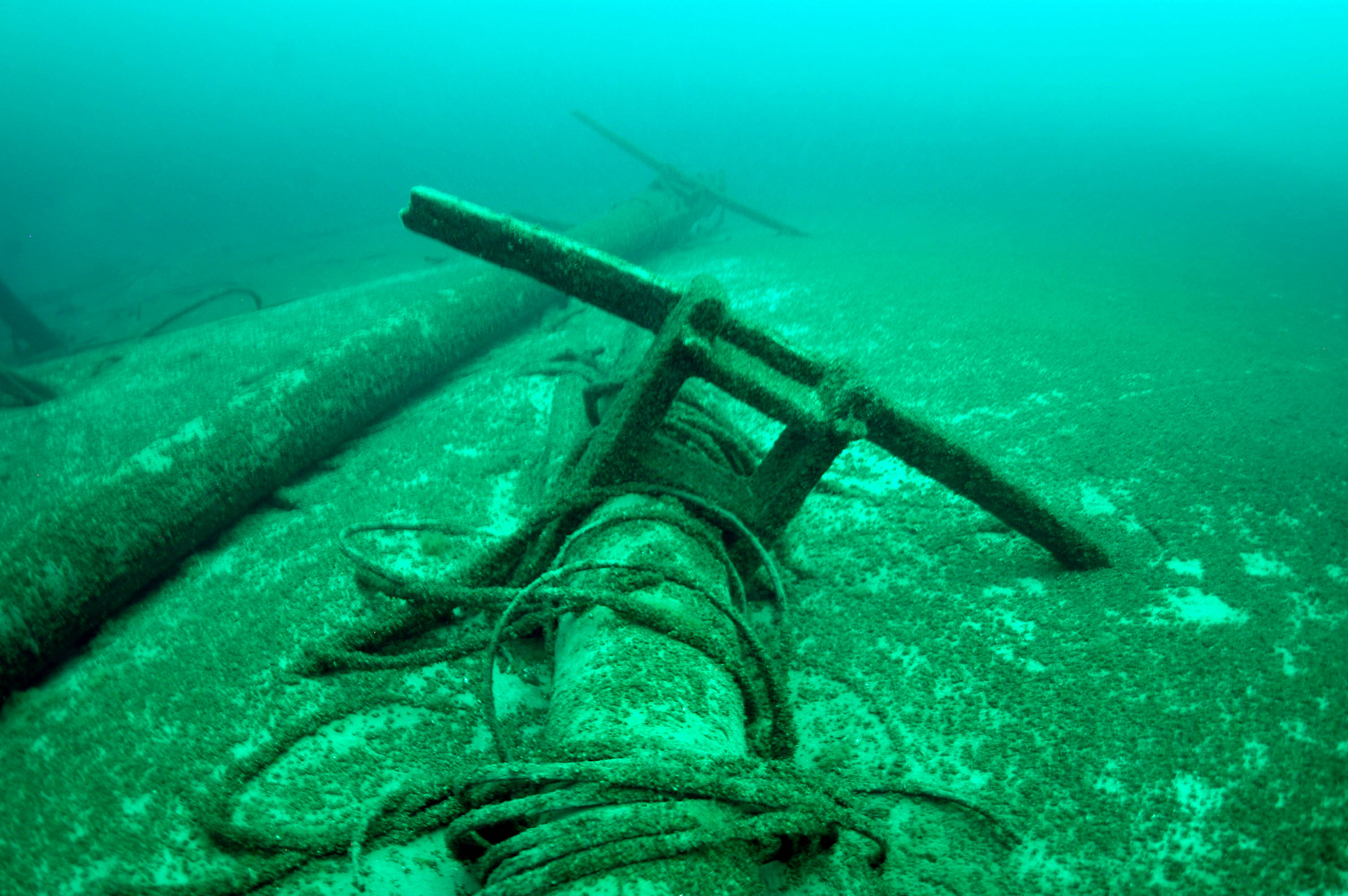
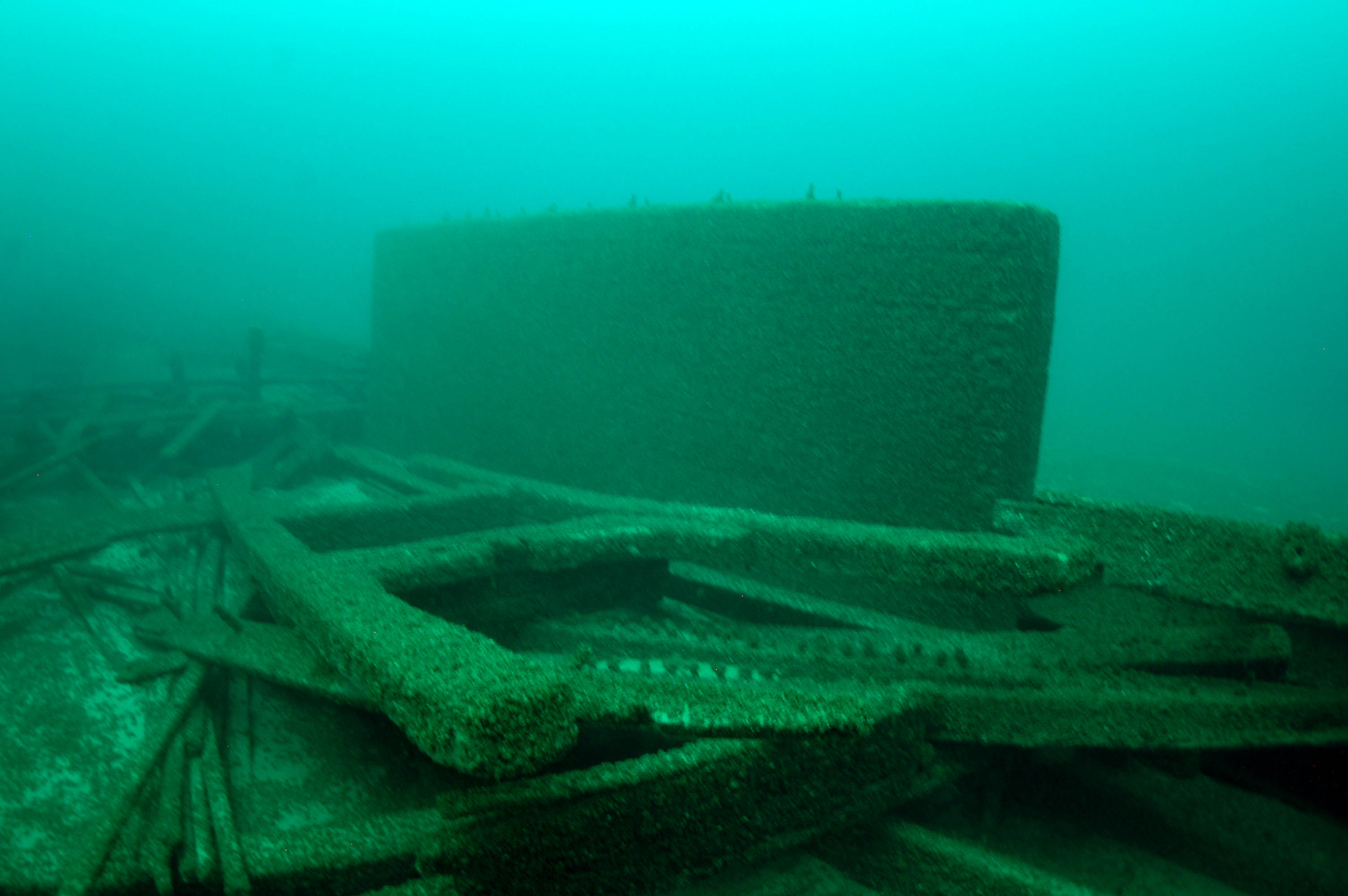
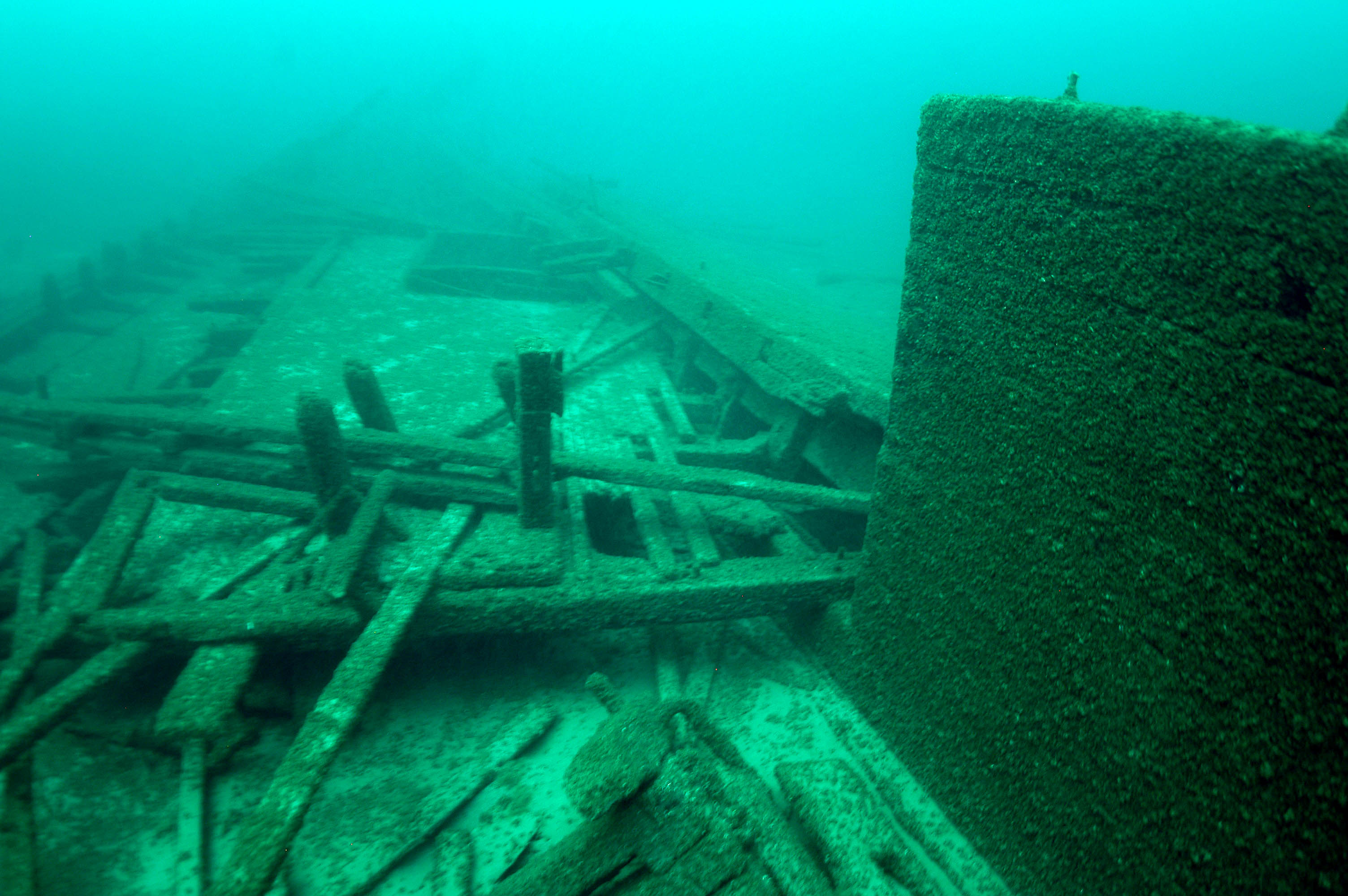
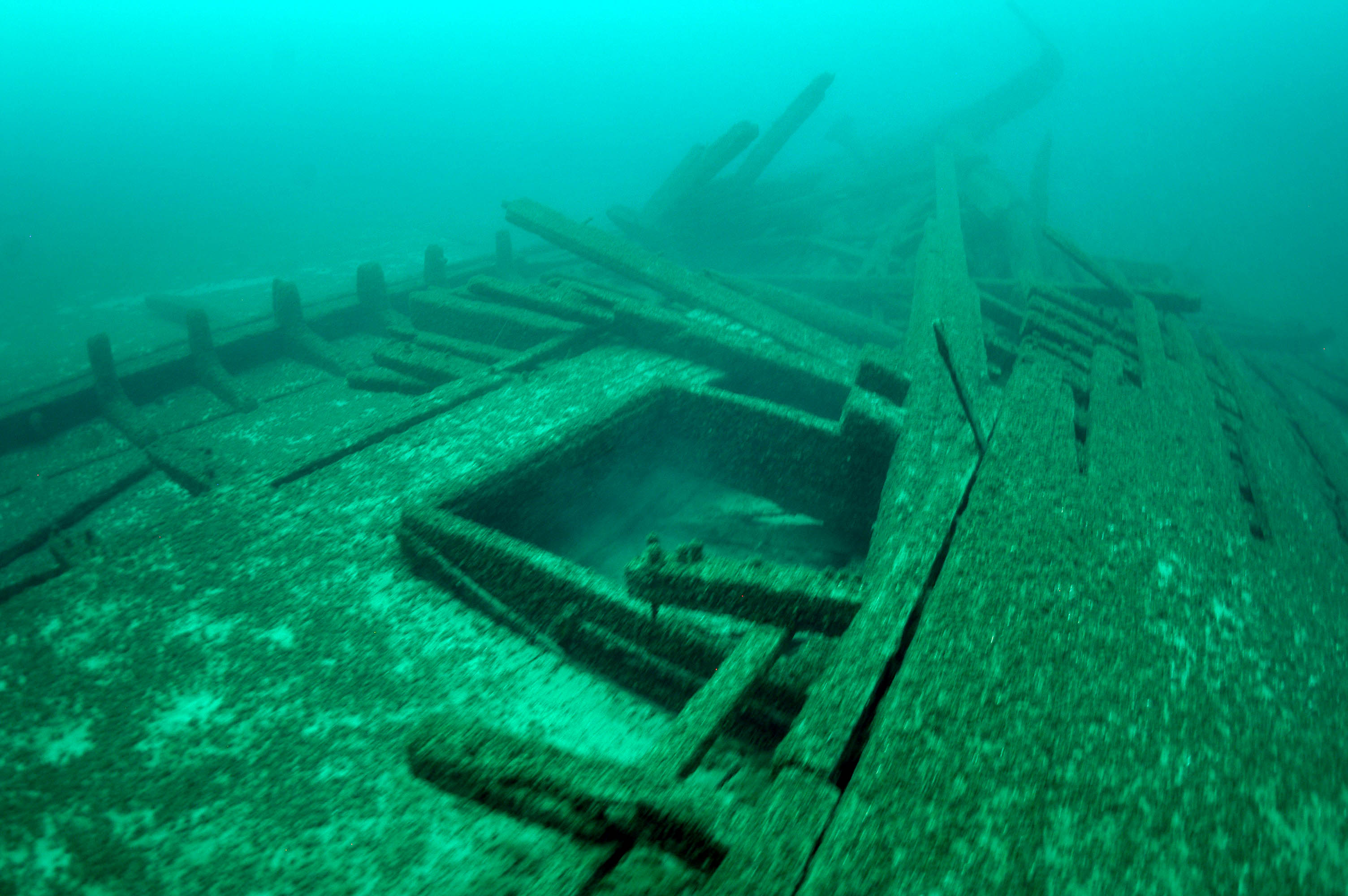
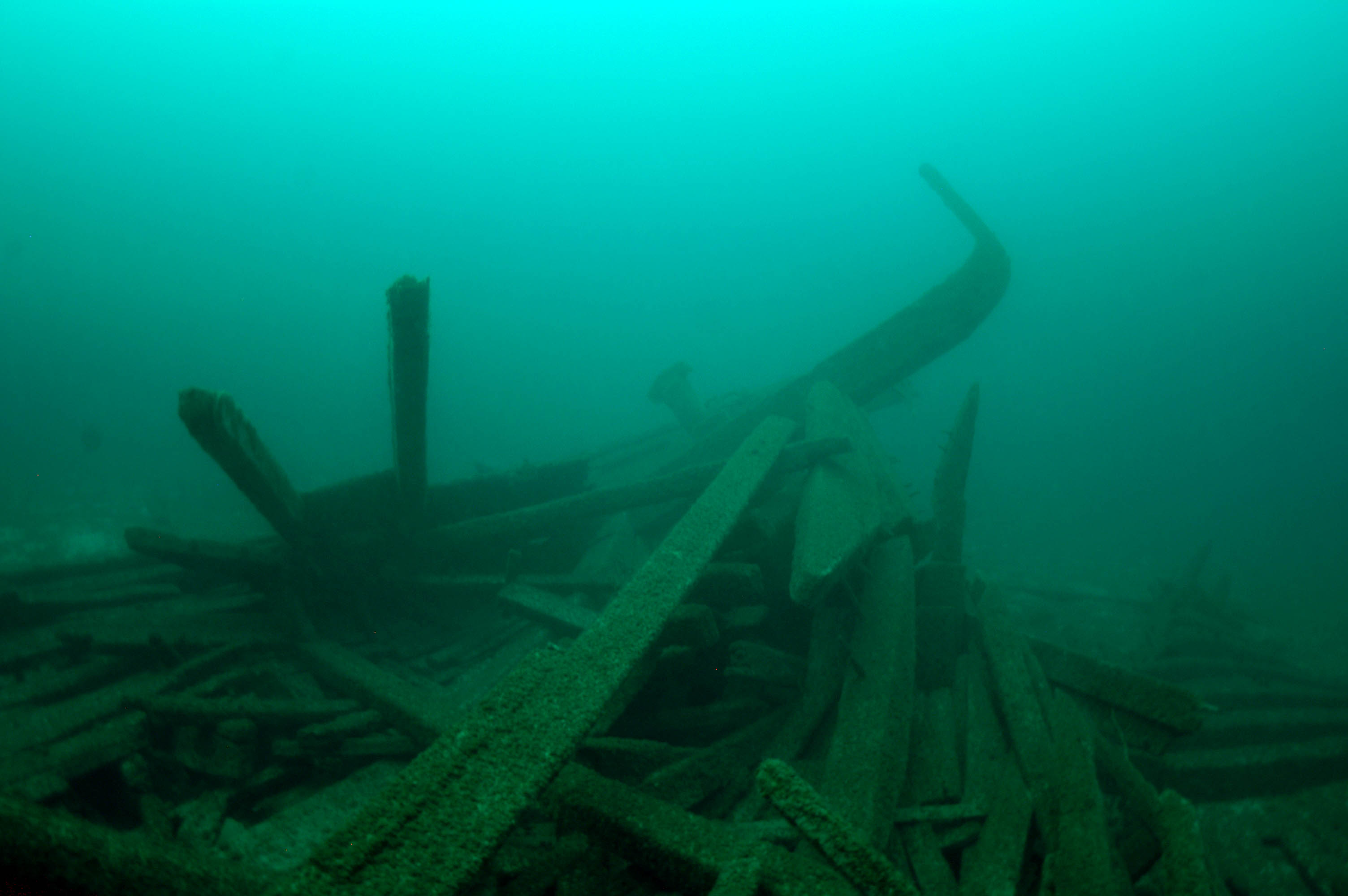
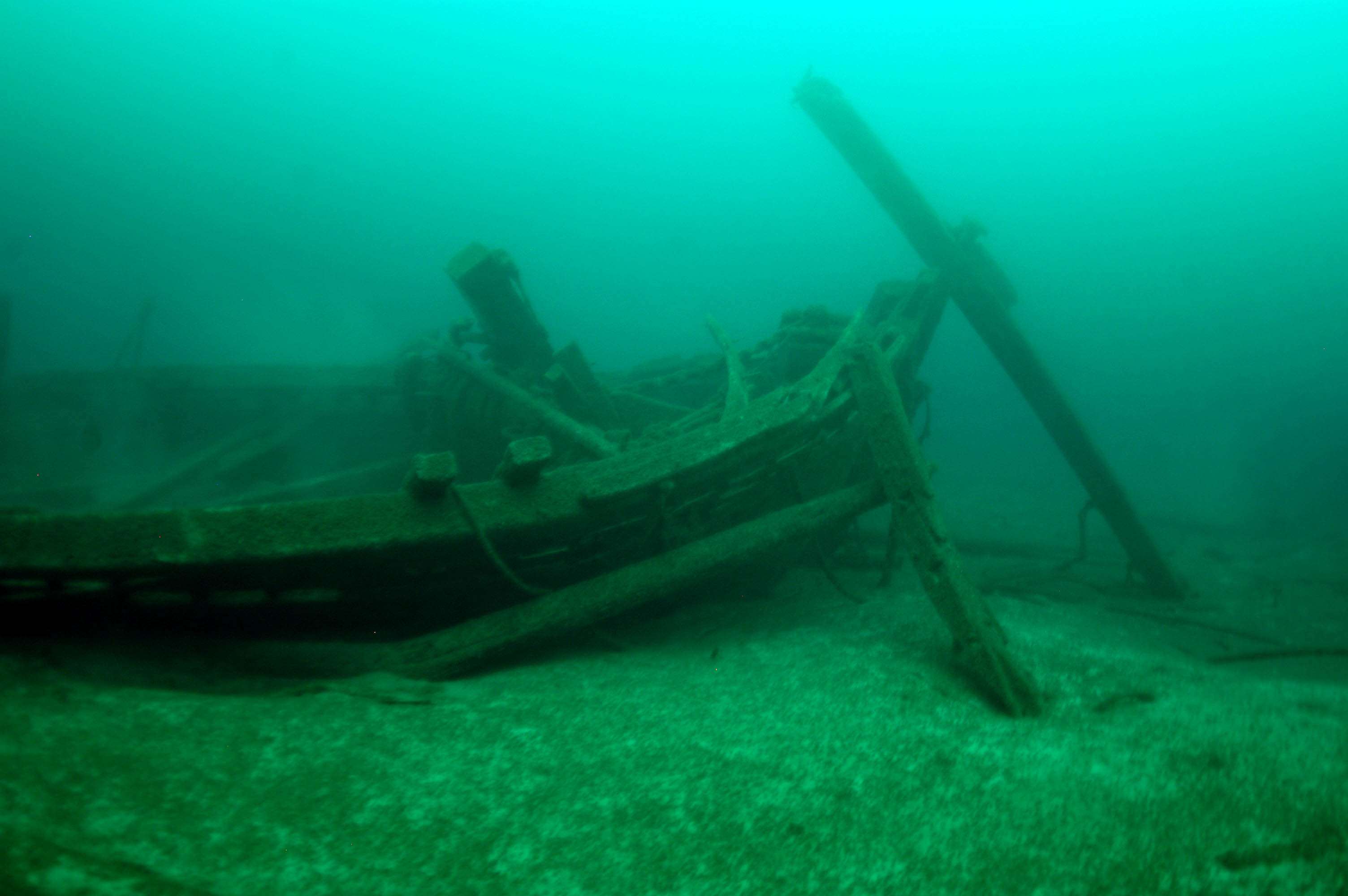
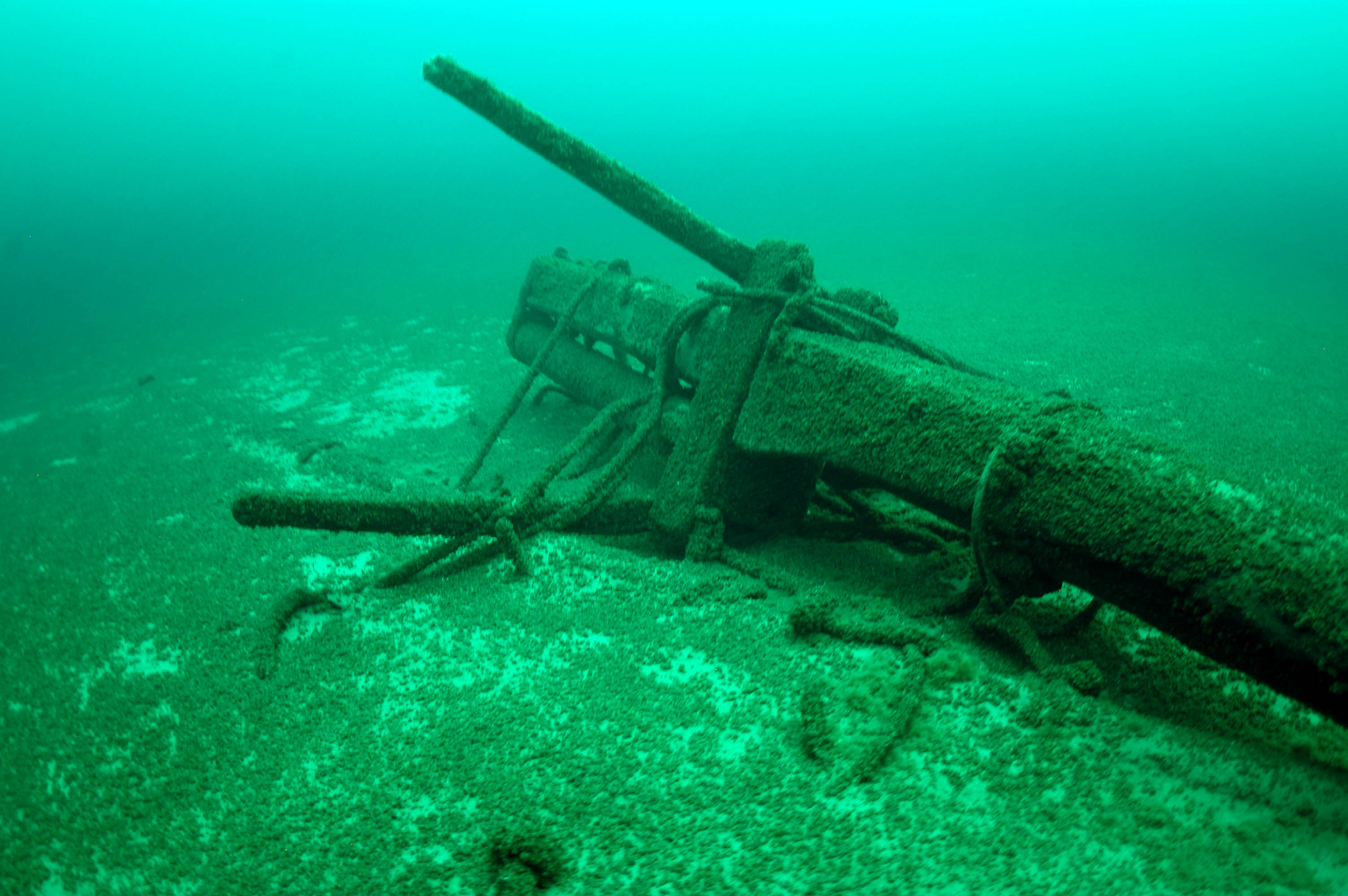

 Confirmed Location
Confirmed Location
 Unconfirmed location
Unconfirmed location